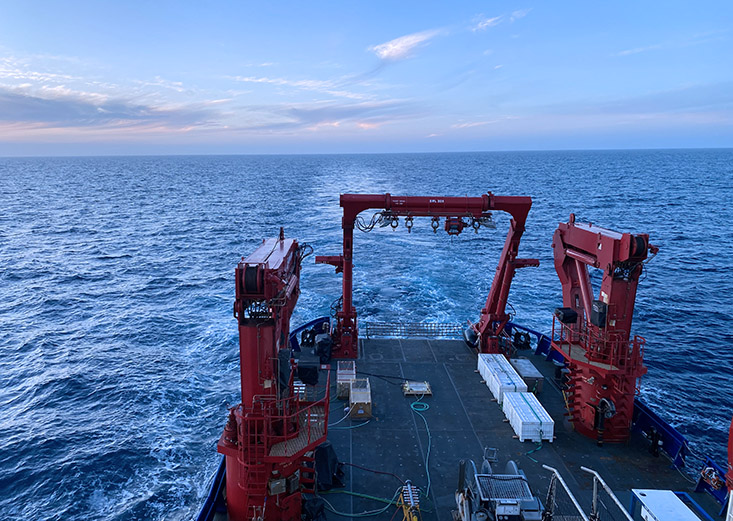FOR THE FULL EXPERIENCE VIEW OUR MULTIMEDIA STORY PRESENTATION
By Caitlyn Parente, USF CMS graduate student
Recently, my mom shared a story from when I was a little girl. I was about seven years old, and we were watching a documentary about the ocean when I turned to her and said, “Mom, one day I’m going to be on one of those ships.”
That day was a couple months ago when I left my home in Tampa to embark on a one-month journey aboard the R/V Sikuliaq with my advisor, Dr. Kristen Buck, and a few of our lab members. Our team from the University of South Florida, in collaboration with scientists from around the globe, would be studying the effects of ocean acidification on iron bioavailability in phytoplankton in the North Pacific.
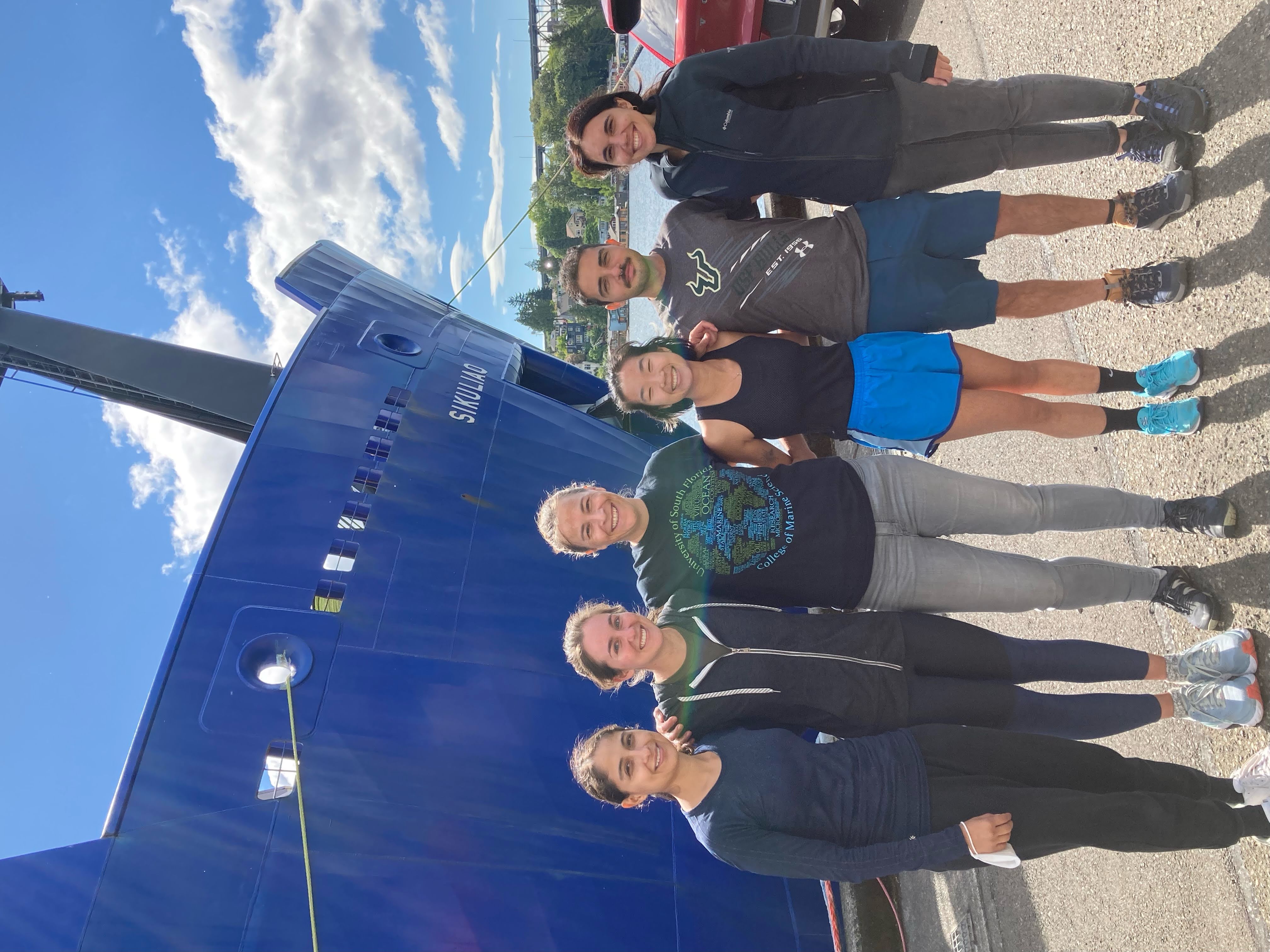
Buck lab members (from left): Delfina Navarro-Estrada, Caitlyn Parente, Kristen Buck, Calyn Crawford, Salvatore Caprara, and Lise Artigue.
The cruise came after my first year as a master’s student, so I spent the year leading up to the cruise learning about ocean processes and reading about sea-going research. I’d been looking forward to the trip for months. I knew I was going to work hard and learn a lot, but all the reading in the world couldn’t fully prepare me for the unique experience of living and working at sea.
We flew to Seattle on June 1st and settled into a hotel. It was the night before mobilization began; we had two days of mobilization (getting all our equipment on the ship and set up) before our departure. After coffee and rhubarb pastries on June 2nd, we walked up to our temporary home. First, I was blown away by the size of the ship. It makes me laugh now because I know I didn’t have any context for what I was embarking on, but it was so much bigger than I had imagined. Seeing the ship for the first time also brought tears to my eyes, as that moment was preceded by years of dreaming and hard work. It felt a little surreal to be going on a research cruise, and I don’t think I realized just how thankful and proud I was until then.
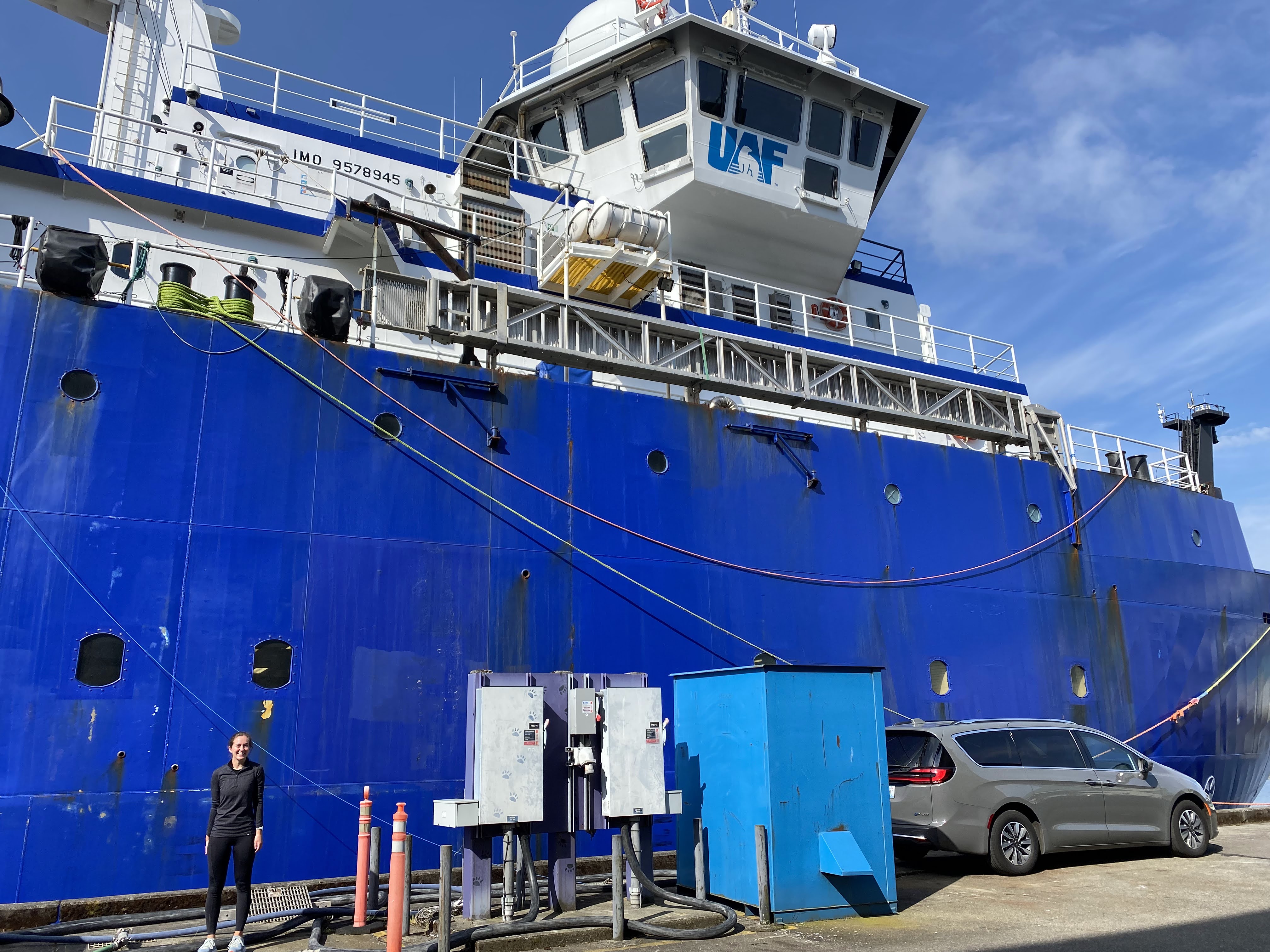
R/V Sikuliaq (next to me for scale).
We small-talked with the science party before moving on board and getting started. I remember the first day of mobilization being one of the most fun. We hit the ground running to set up three bubbles (workspaces covered in plastic to reduce trace metal contamination from the rusty ship) and test our equipment.
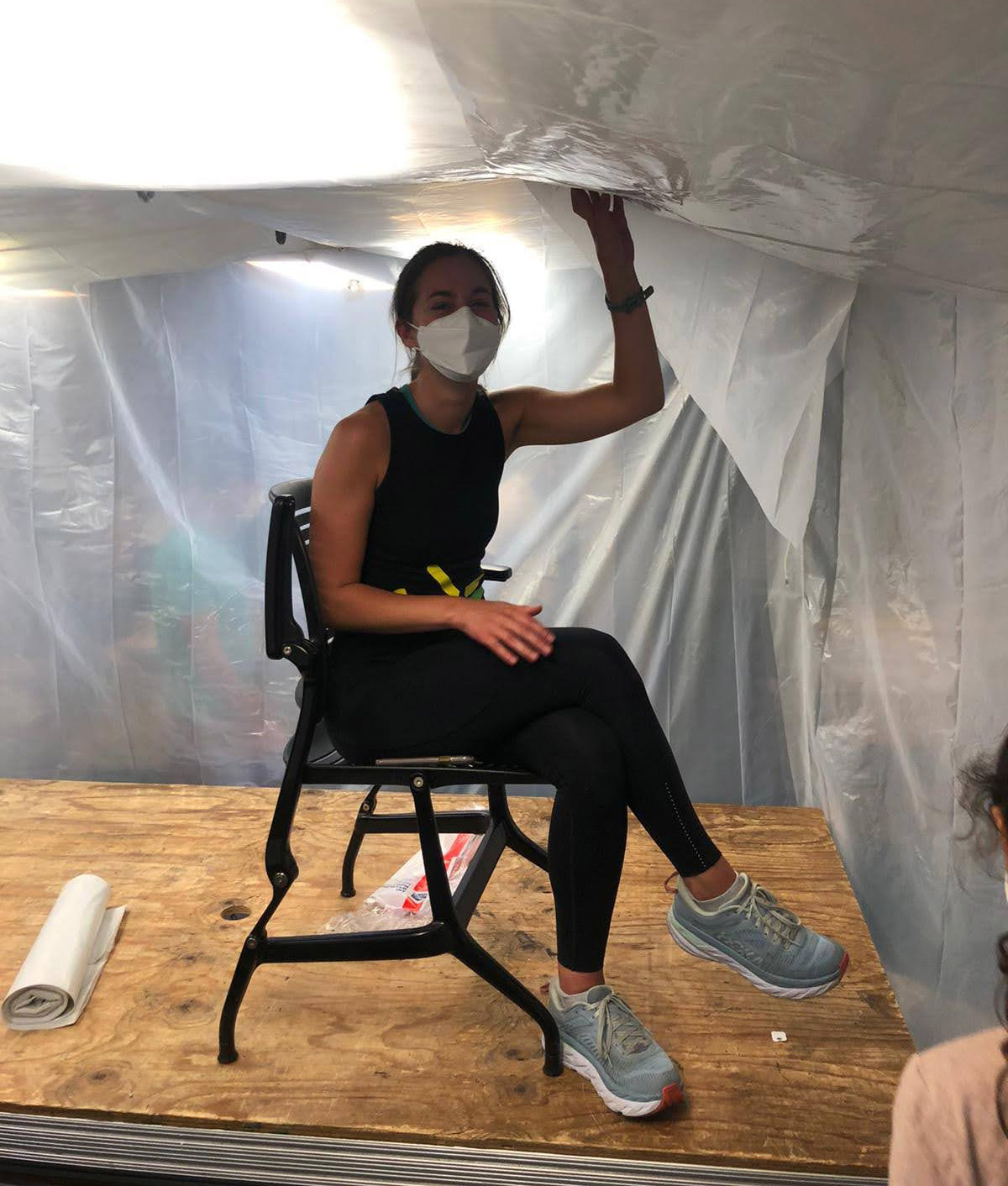
It takes a lot of hands (and creativity) to build a bubble.
With everything set up and secured for sea, it was time to embark on our expedition. We left Puget Sound, and the work began. Over the course of the month, we visited three main ocean stations, each in a different ocean region, that were designated for phytoplankton incubation experiments: the first experiment was performed in a coastal upwelling region, the second in a subtropical gyre, and the third at Ocean Station Papa (OSP), a classic high nutrient, low chlorophyll (HNLC) region. Sampling in different environments allowed our team to explore how phytoplankton communities with various levels of nutrient limitation might be affected by ocean acidification.
I was responsible for running all the nutrient analyses on this cruise. With our nutrients system, I was able to quickly run filtered seawater samples (sometimes hundreds in a day!) and find concentrations of important macronutrients in the water, namely phosphorus, nitrate, nitrite, and silicate.
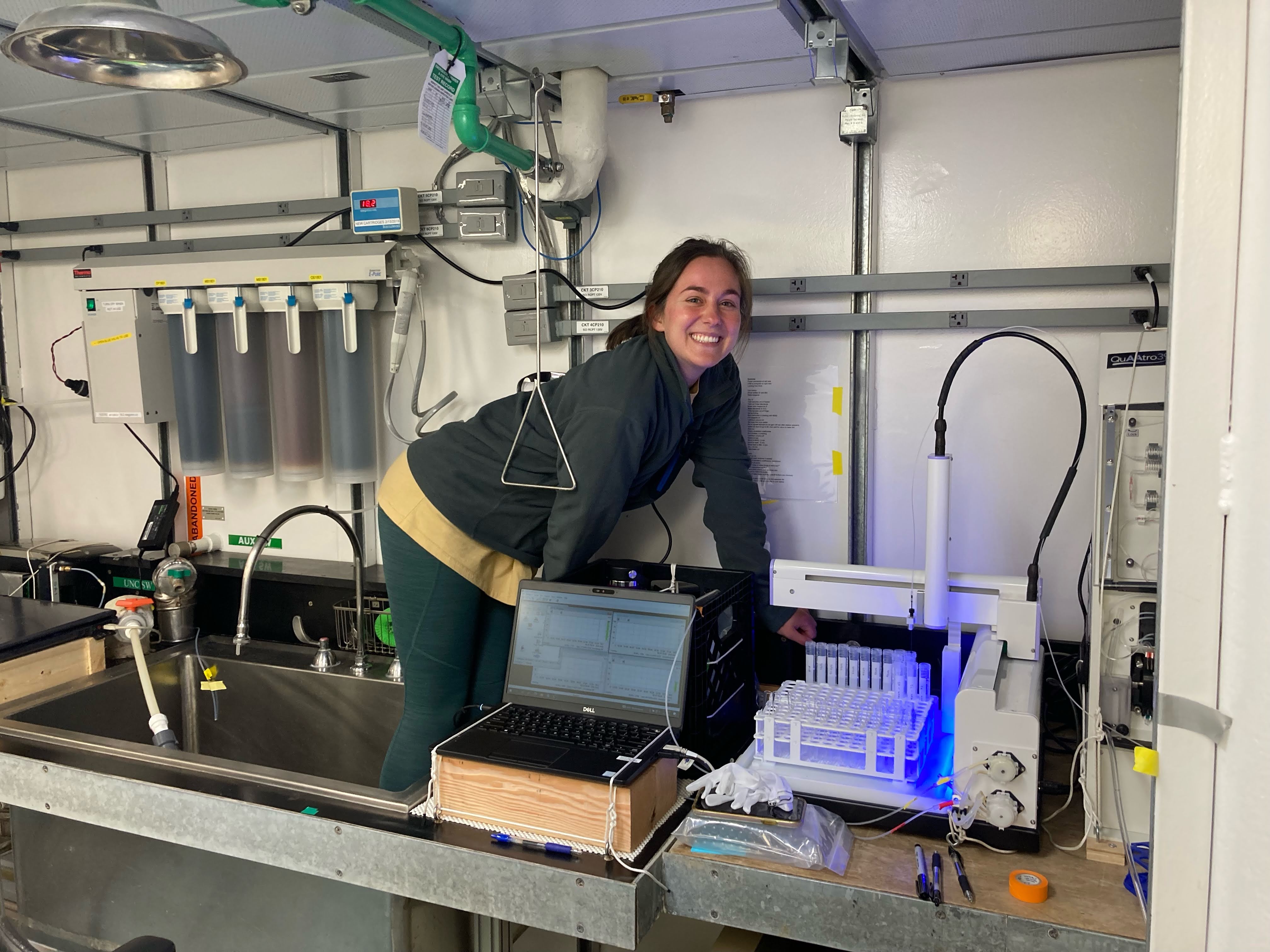
Troubleshooting from the sink.
When I wasn’t running samples for nutrient analysis, I was learning anything and everything else that I could. I learned how to prep and deploy the CTD, how to change the batteries, how to operate the winch, how to deploy and retrieve the towfish that pumps seawater into the ship, and how to filter water through our filter rigs.
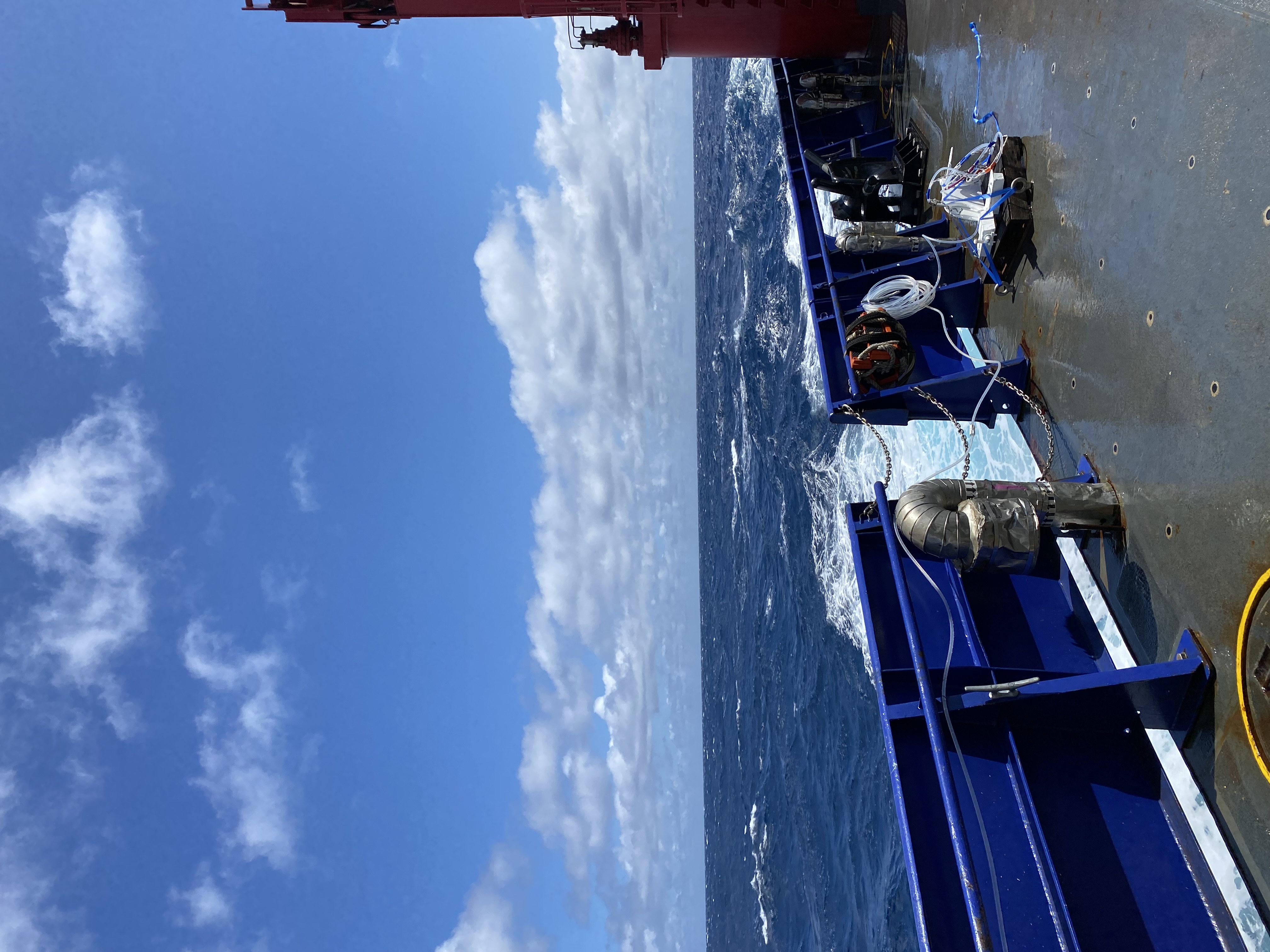
A typical view in the subtropical gyre – the bluest water I’ve ever seen!
On a typical day, I woke up for breakfast, filtered seawater in the bubble shortly after finishing my first cup of tea, worked until lunch, took a little break in the afternoon, and then ran nutrients samples or analyzed data in the late afternoon and evening.
Being at sea feels like a time warp; every day is more or less the same, and all you can see is ocean in every direction. You’re also working and living with the same 20 people for 30 days. But I think all of that is part of why I loved it so much. For my one month at sea, I didn’t have to worry about my commute to work or making meals or being on time for meetings. I didn’t have side projects or paper deadlines or events to attend. I was wholly focused on the work at hand – running samples, analyzing and interpreting data, and communicating findings to the science party – along with everyone else. It was unifying and exciting, even if tiring and frustrating at times. While we were all away from our normal lives, we were working for this short time toward the same goal.
At the end of the day, we all have a lot more in common than we may think. I learned about the other scientists’ work, but I also learned about their families and hometowns and their favorite music. We bonded over shared interests and spent our evenings laughing and playing board games. Appreciation for a good sunset seems to be universal. I’m thankful to have met such wonderful and unique people, and if it wasn’t for this specific cruise, our paths likely would never have crossed. The professors leading us were particularly incredible, and I’m grateful to have had their mentorship and expertise to guide us. They showed us the ropes, shared all kinds of stories, and encouraged us as both scientists and people.
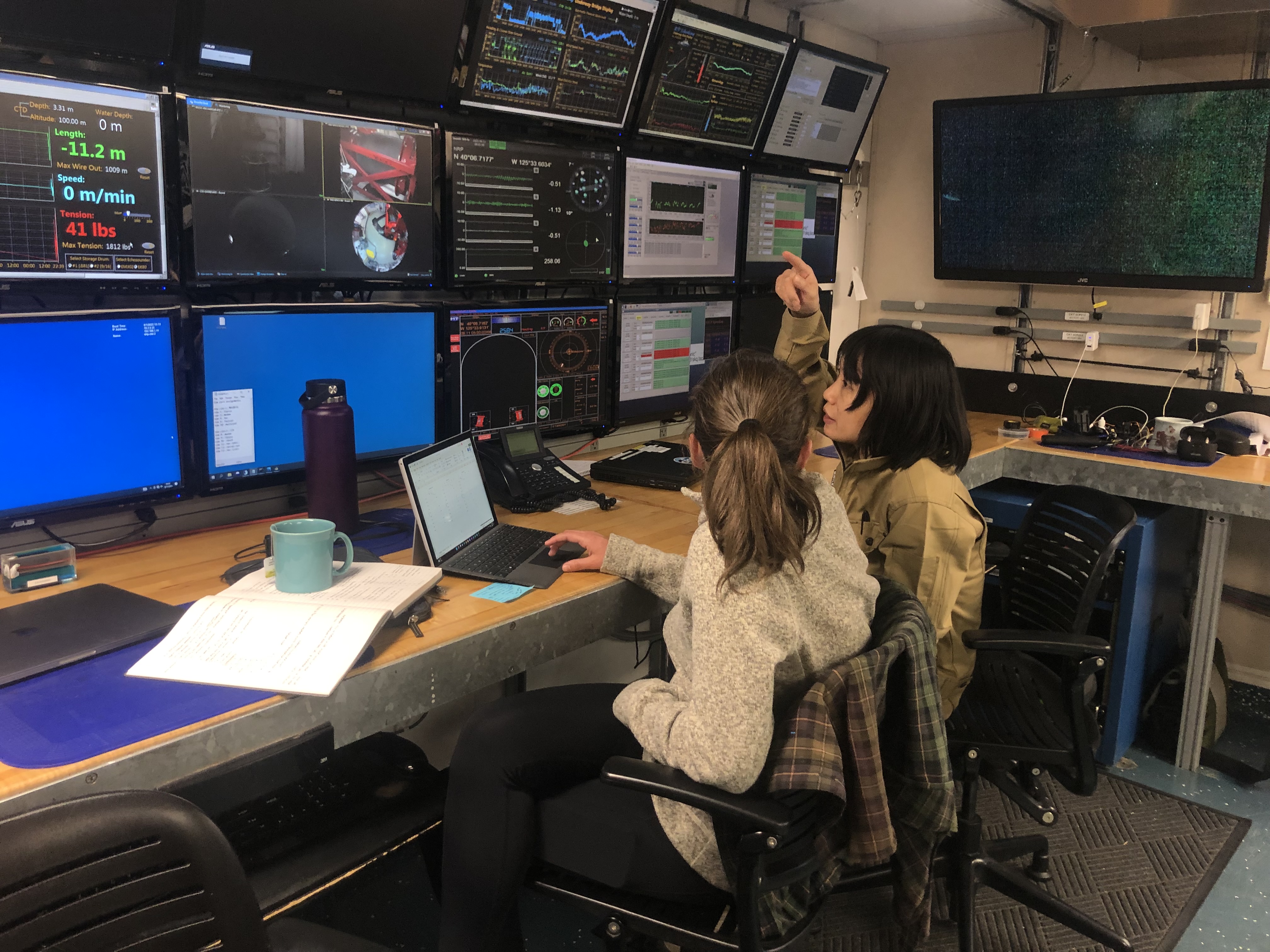
Discussing data in the computer lab.
On the last night at sea, my new friend Katherine and I stayed up all night to finish running some samples. We had the energy, we didn’t want to introduce any new variables by shipping samples home, and I think a small part of us wanted to soak up every last moment at sea. We made one last hot chocolate and stayed up to watch the sun rise, and for the first time in a month, we could see land in the distance. Soon we would all return to our normal lives, in Maine, Canada, Japan or Florida. We knew that we’d shortly go back to our regular routines and the hustle and bustle of life, so we reflected on a month well spent, and promised ourselves that this wouldn’t be our last research cruise.
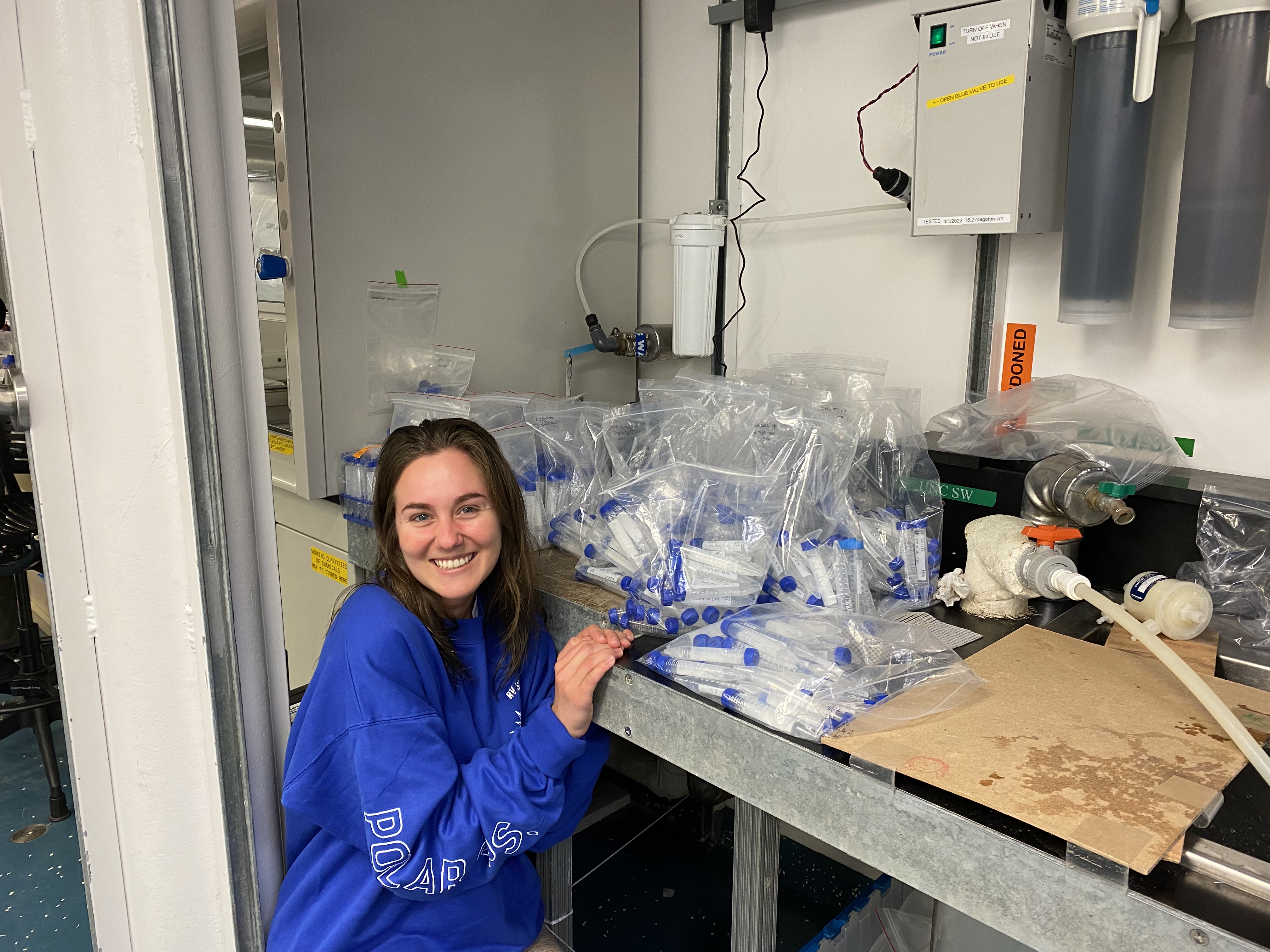
Endless Falcon tubes! We collected and analyzed over 950 distinct nutrients samples over the course of the cruise.
When the Sikuliaq arrived in port in Seward, Alaska, we moved our pallet boxes off the ship and cleaned our rooms. We packed up our things and said our goodbyes to new friends and mentors. In the days that followed, I took some time away from work and explored Alaska.
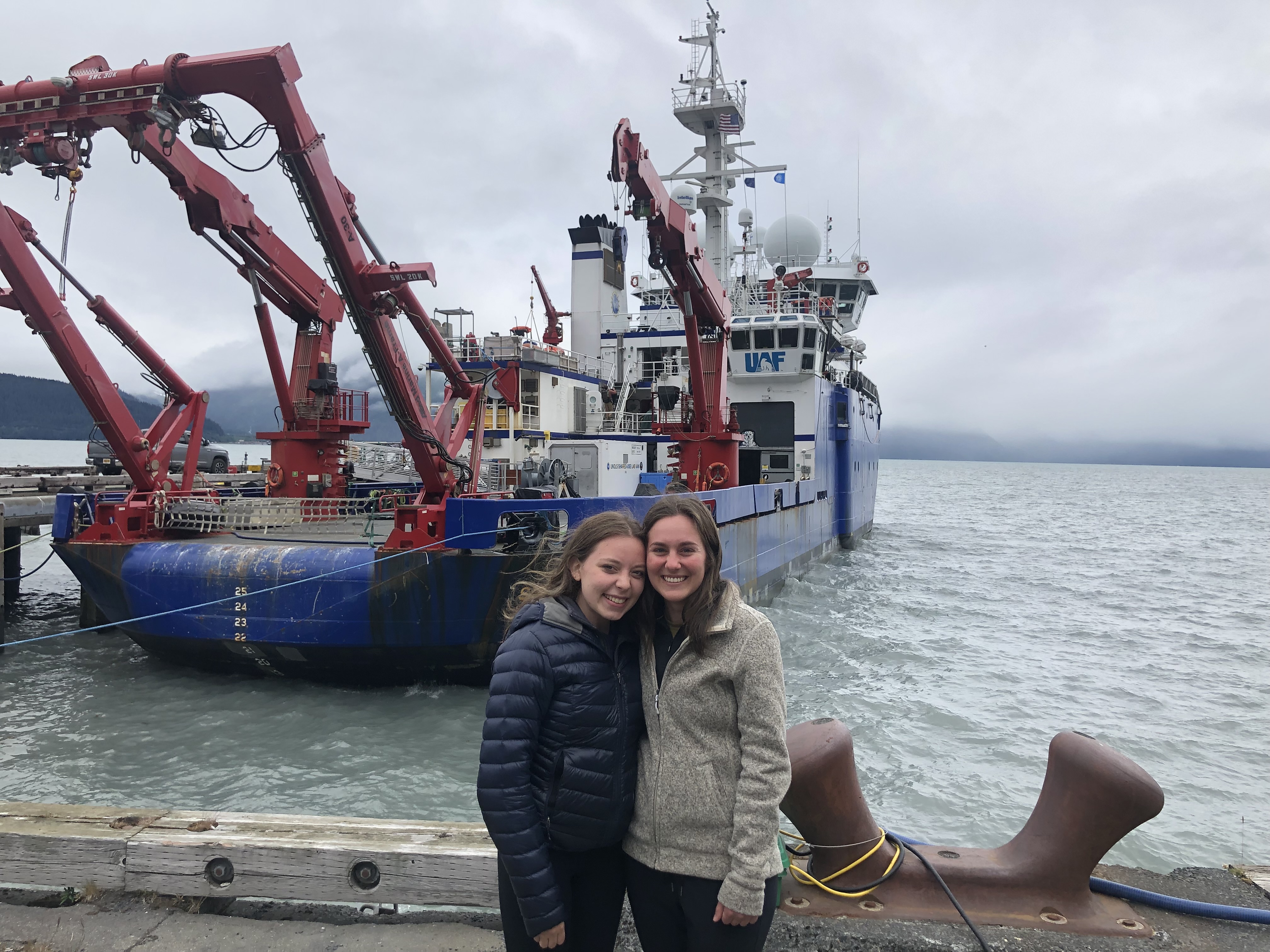
Katherine and I back on land.
When I returned home to Tampa, I came back with a renewed excitement about my research at USF and a deeper appreciation for oceanography. I’m thankful to work with brilliant scientists, and I’m even more thankful to be working in a field that I love. There is always something new to learn, and there is a really big world out there that I’ve only just begun to explore. I look forward to what lies ahead in my academic career, and I’m thrilled by the idea of a lifetime spent studying the ocean. I know seven-year-old Caitlyn would be, too.
View more imagery from the expedition.
